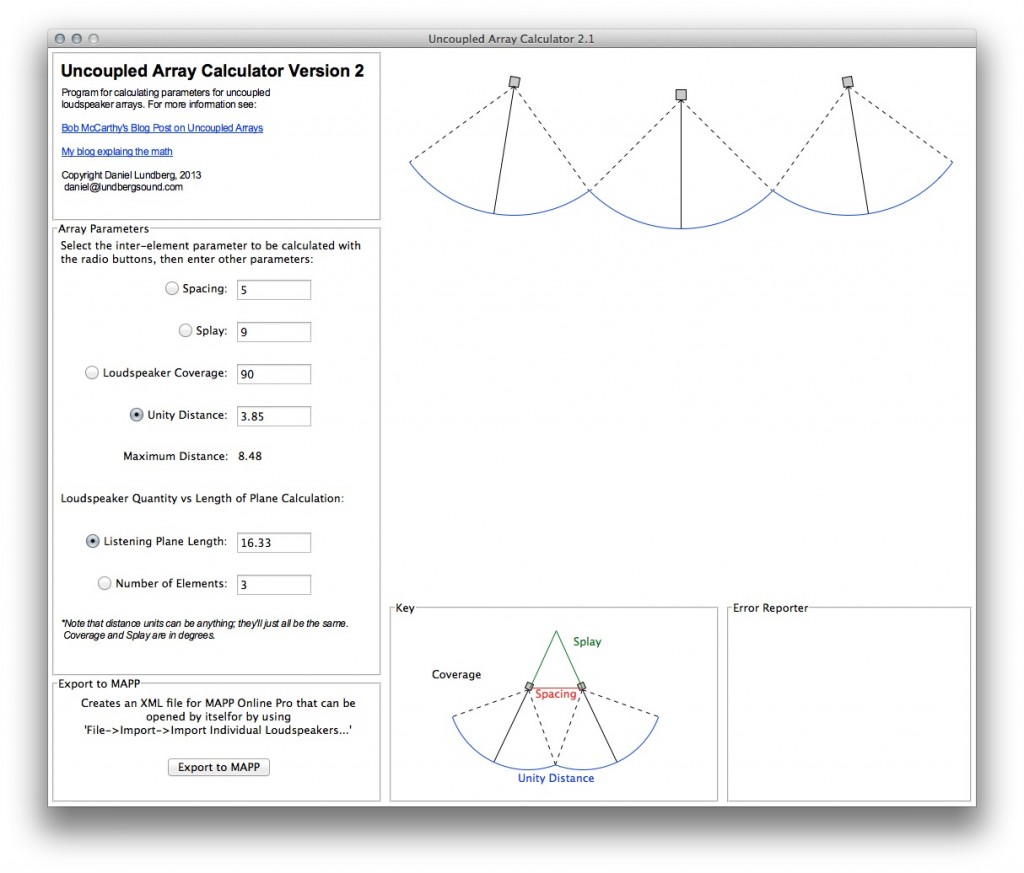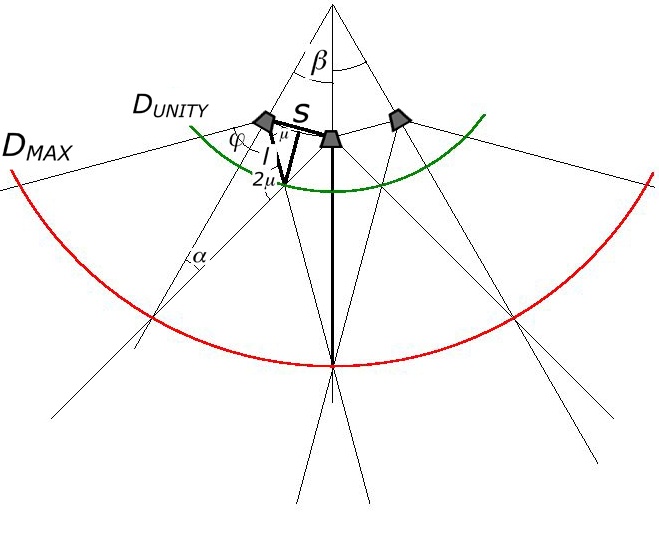I’ve taken the trig for designing uncoupled loudspeaker arrays and made it into its own piece of software. It is a big UI improvement over the old Excel sheet, it draws a diagram of the array, and it can export arrays as XML files for Meyer’s MAPP Online Pro. It’s written in Python, but I’ve created standalone versions for both Mac and PC.


